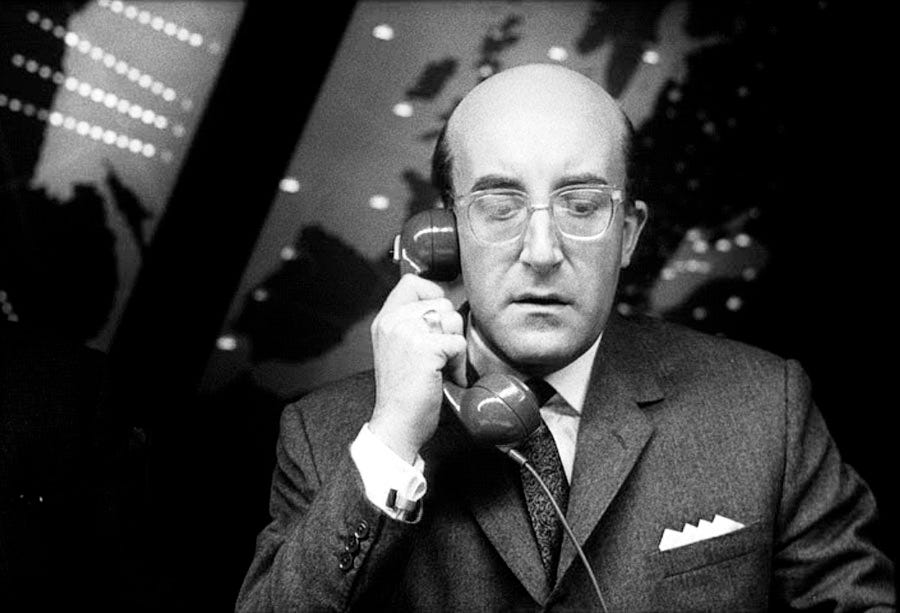A New "Scenario" for Nuclear War
"So here we are. Teetering at the edge—perhaps even closer than ever before."
Greg Mitchell is the author of a dozen books, including (with Robert Jay Lifton) “Hiroshima in America,” “Atomic Cover-up,” and the recent award-winning “The Beginning or the End: How Hollywood—and America—Learned to Stop Worrying and Love the Bomb.” He has directed three documentary films since 2021 for PBS (including “Atomic Cover-up”) . You can subscribe to this newsletter for free.
Leaving for holiday break tomorrow, but a quick post here on an important new book. The author, Annie Jacobsen, has written other notable volumes, including “Area 51", “Operation Paperclip” and “The Pentagon’s Brain.” She’s also written and produced for TV series such as “Tom Clancy’s Jack Ryan” and “Clarice.”
The new book, from Dutton, is titled simply “Nuclear War: A Scenario.” A Wall St. Journal review puts it succinctly: “Annie Jacobsen gives us a vivid picture of what could happen if our nuclear guardians fail…Terrifying.” From the publisher:
There is only one scenario other than an asteroid strike that could end the world as we know it in a matter of hours: nuclear war. And one of the triggers for that war would be a nuclear missile inbound toward the United States.
Every generation, a journalist has looked deep into the heart of the nuclear military establishment: the technologies, the safeguards, the plans, and the risks. These investigations are vital to how we understand the world we really live in—where one nuclear missile will beget one in return, and where the choreography of the world’s end requires massive decisions made on seconds’ notice with information that is only as good as the intelligence we have.
Pulitzer Prize finalist Annie Jacobsen’s “Nuclear War: A Scenario” explores this ticking-clock scenario, based on dozens of exclusive new interviews with military and civilian experts who have built the weapons, have been privy to the response plans, and have been responsible for those decisions should they have needed to be made. “Nuclear War: A Scenario” examines the handful of minutes after a nuclear missile launch. It is essential reading, and unlike any other book in its depth and urgency.
Of course, this interests me, as I have warned about this in several books, hundreds of articles and a PBS film going back to the early 1980s, and since last July here on this Substack (numerous times). Our “first use” or “first strike” policy, in effect since August 1945, has been a focus of my writing, most recently here, along with America (and prominent film directors) still not coming to terms with the use of the weapon against Japan and the lessons for today.
Mother Jones is out with an excerpt today from the Jacobsen book. My first piece for that magazine was published four decades ago—an interview with Hiroshima pilot Paul Tibbets. Since I’ve written several pieces for them in recent years (including on this subject), I will guess that they won’t mind if I excerpt from their excerpt below, adapted for the magazine, copyright Jacobsen, of course.
We sit on the razor’s edge. Vladimir Putin has said he is “not bluffing” about the possibility of using weapons of mass destruction should NATO overstep on Ukraine, and North Korea accuses the US of having “a sinister intention to provoke a nuclear war.” For generations, the American public has viewed a nuclear World War III as a remote prospect, but the threat is ever-present. “Humanity is one misunderstanding, one miscalculation away from nuclear annihilation,” cautions UN Secretary-General António Guterres. “We must reverse course.”
So far, we haven’t. The Pentagon’s plans for nuclear war remain firmly in place.
The US government has spent trillions of dollars over the decades preparing to fight a nuclear war, while refining protocols meant to keep the government functioning after hundreds of millions of Americans become casualties of a nuclear holocaust, and the annual budgets continue to grow. The nation’s integrated nuclear war plan in the 1960s was utter madness. It almost certainly remains so today….
The number of nuclear weapons in the US stockpile today is smaller now than it was in 1960, but there still are 1,770 deployed weapons, a majority of which are on ready-for-launch status, with thousands more held in reserve, for a total inventory of more than 5,000 warheads. Russia has some 1,674 deployed nuclear weapons, most on ready-for-launch status, with thousands more in reserve, for a total inventory about the same size. These weapons, if used, would result in the kind of mass extermination John Rubel heard about decades ago, and that “Nuclear War: A Scenario” is based upon.
To insist that nuclear war is “unimaginable” is a failure of imagination. Presidents have been asking us to contemplate nuclear holocaust since the SIOP first came to be. “Today, every inhabitant of this planet must contemplate the day when this planet may no longer be habitable,” President Kennedy told the world in 1961. Four years later, President Ronald Reagan and Soviet General Secretary Mikhail Gorbachev declared in a joint statement that “a nuclear war cannot be won and must never be fought.” And President Joe Biden, in 2022, warned that “the prospect of Armageddon” is at a terrifying new high.
So here we are. Teetering at the edge—perhaps even closer than ever before.





I hope it was your typo that put Ray-gun four years after JFK!